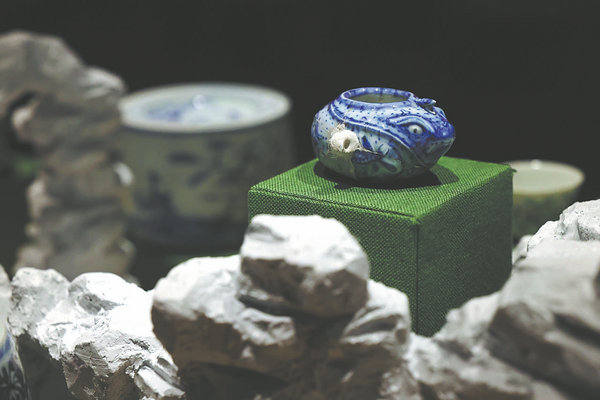

Auspicious signs
Animals which embody good luck and blessings are recurring motifs in porcelain from ancient times. An exhibition now on at the Prince Kung's Palace Museum in Beijing shows 120 ceramics from the Ming Dynasty (1368-1644) which were made to resemble animals, or feature animal patterns of vivid colors and animation.
The vases, plates, incense burners, teapots and ornamental objects were excavated from the relic sites of the imperial kiln in Jingdezhen, Jiangxi province. The kiln began producing ceramics for imperial use in 1369, and remained in operation until the end of Qing Dynasty (1644-1911). While the best pieces were sent to the royal court in Beijing, the defective or low-quality ones were smashed to pieces and buried.
Since the 1980s, continuous archaeological excavations have collected a great number of ceramic debris from the relic site, and restored dozens to their original shape, so that people can feel the graceful beauty of imperial porcelain.
Visitors to the exhibition, through to March 30, will be able to touch and feel the texture of a ceramic fragment from a qinghua cobalt blue dragon-motif bowl, believed to be from the 15th century.
8:30 am-5 pm, closed on Mondays.17 Qianhai Xijie, Xicheng district, Beijing. 010-8328-6859.